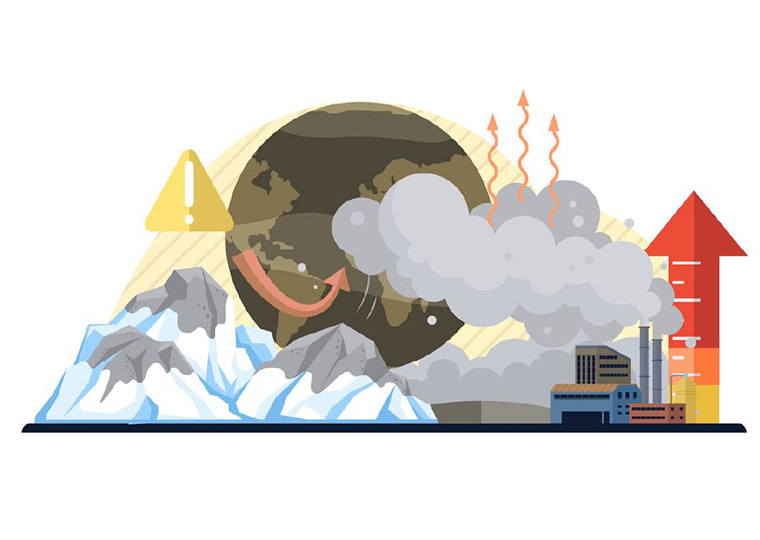A team of experts makes the financial case that governments should spend more on nudging
Behavioral science does not suffer from a lack of academic focus. A Google Scholar search for the term delivers more than three million results.
While there is an abundance of research into how human nature can muck up our decision making process and the potential for well-placed nudges to help guide us to better outcomes, the field has kept rather mum on a basic question: Are behavioral nudges cost-effective?
That’s an ever more salient question as the art of the nudge is increasingly being woven into public policy initiatives. In 2009, the Obama administration set up a nudge unit within the White House Office of Information and Technology, and a year later the U.K. government launched its own unit. Harvard’s Cass Sunstein, co-author of the book Nudge, headed the U.S. effort. His co-author, the University of Chicago’s Richard Thaler — who won the 2017 Nobel Prize in Economics — helped develop the U.K.’s Behavioral Insights office. Nudge units are now humming away in other countries, including Germany and Singapore, as well as at the World Bank, various United Nations agencies and the Organisation for Economic Co-operation and Development (OECD).
Opt In to the Review Monthly Email Update.
Given the interest in the potential for behavioral science to improve public policy outcomes, a team of nine experts, including UCLA Anderson’s Shlomo Benartzi, Sunstein and Thaler, set out to explore the cost-effectiveness of behavioral nudges relative to more traditional forms of government interventions.
In addition to conducting their own experiments, the researchers looked at published research that addressed four areas where public policy initiatives aim to move the needle to improve individuals’ choices: saving for retirement, applying to college, energy conservation and flu vaccinations.
For each topic, they culled studies that focused on both nudge approaches and more traditional mandates such as tax breaks, education and financial incentives, and calculated cost-benefit estimates for both types of studies. Research used in this study was published between 2000 and 2015. All cost estimates were inflation-adjusted.
Nudging Pays Off
The study itself should serve as a nudge for governments to consider adding nudging to their policy toolkits, as this approach consistently delivered a high return on investment, relative to traditional mandates and policies.
Retirement Security
The policy goal: Encourage people to contribute more to their workplace retirement savings account.
The nudge approach: To address procrastination and commitment issues, a 2009 study set an arbitrary 30-day deadline for new employees to indicate how much they wanted to contribute to their retirement plan (or have it default to zero if they did not elect a specific rate).
Traditional approaches: The authors looked at four different studies that offered a tax or other financial incentive to spur individuals to save more.
The nudge delivered an estimated $100 increase in contributions for every $1 spent to deliver the nudge, nearly seven times the payoff for the most effective traditional approach.
Applying to College
The policy goal: Increase the number of students who apply to college.
The nudge approach: To be eligible for federal financial aid, prospective students and their families must submit the Free Application for Federal Student Aid (FAFSA), a notoriously long and complicated document. A 2012 field study provided professional assistance that streamlined the FAFSA application process.
Traditional approaches: Two studies focused on financial incentives to boost applications through government subsidies or tax credits for families whose children attended college.
Providing help on the front end with assistance in filing the FAFSA form was measurably more cost-effective than incentives that would only be realized after a student applied and enrolled.
Energy Consumption
The policy goal: Encourage households to reduce their electricity usage.
The nudge approach: Three studies were analyzed.
- A letter sent to households comparing their energy consumption to their neighbors’.
- Energy usage of specific appliances in a house tracked and information provided to the customer via a web page that also included a nudge on the health ramifications of pollution.
- A message added to utility bills that calls out the extra household cost of higher electricity usage.
The traditional approach: One study tracked the effectiveness of offering future discounts to customers, a method that reduced their usage by 20 percent year-over-year. Another study tracked the effectiveness of financial incentive and education programs offered by more than 300 utilities over a 14-year period.
The keeping-up-with-the-Joneses letter nudge was nearly twice as effective as the next best policy push, but this analysis also shows that not all nudges pay off.
Flu Vaccinations
The policy goal: Increase the flu vaccination rate.
The nudge approach: To address inertia, procrastination and forgetfulness, a 2011 study looked at effectiveness of having participants actively commit to a specific date and time they would get vaccinated. Another nudge study looked at the utility of the opt-out appointment: Participants were automatically signed up for a vaccination appointment that they could then cancel. As shown in the chart below, nudging people to commit to an appointment they themselves scheduled was more than three times as effective as assigning them an appointment. While all 50 people who scheduled their own appointment showed up, nearly 20 percent of the people assigned a time changed or canceled their appointments.
The traditional approach: Three studies focused on the use of monetary incentives, education and providing free workplace vaccinations.
On a cost-adjusted basis, the planning nudge increased vaccinations at a rate nearly 40 percent higher than the next most effective intervention.
“Because traditional interventions seek to change behavior by altering the cost-benefit calculation that individuals undertake when focusing on a particular decision, these interventions face the challenge that individuals’ ability (and desire) to engage high-level cognitive capacities is often limited,” the researchers write. The authors include Benartzi, Harvard’s John Beshears, the University of Pennsylvania’s Katherine L. Milkman, Sunstein, Thaler, the White House Office of Technology Policy’s Maya Shankar, Will Tucker-Ray and William J. Congdon of the nonprofit behavioral design lab ideas42, and the U.S. Department of Defense’s Steven Galing.
“Nudges, by contrast, can succeed by taking account of individuals’ intuitions, emotions and automatic decision-making processes. These processes can be triggered with simple cues and subtle changes to the choice environment, so nudges can be effective yet cheap, generating high impact per dollar spent.”
The authors are not advocating for a nudge-only movement, but rather its consideration as a complement to traditional policy initiatives that can also deliver an effective ROI. (As the analysis of the energy and vaccination studies show, old-fashioned education worked well.)
The researchers also make a pitch for future behavioral science research to include a cost-effectiveness analysis with more traditional approaches. “Tracking failures is as important for knowledge creation as tracking successes,” they write. In a world where government resources are increasingly stretched, and taxpayers are increasingly weary of footing the bill, providing insights on the most cost-effective approaches is a valuable nudge behavioral science can provide to public policymakers.
Featured Faculty
-
Shlomo Benartzi
Professor of Behavioral Decision Making
About the Research
Benartzi, S., Beshears, J., Milkman, K., Sunstein, C.R., Thaler, R., Shankar, M., Tucker-Roy, W., Congdon, W.J., & Galing, S. (2017). Should governments invest more in nudging?






